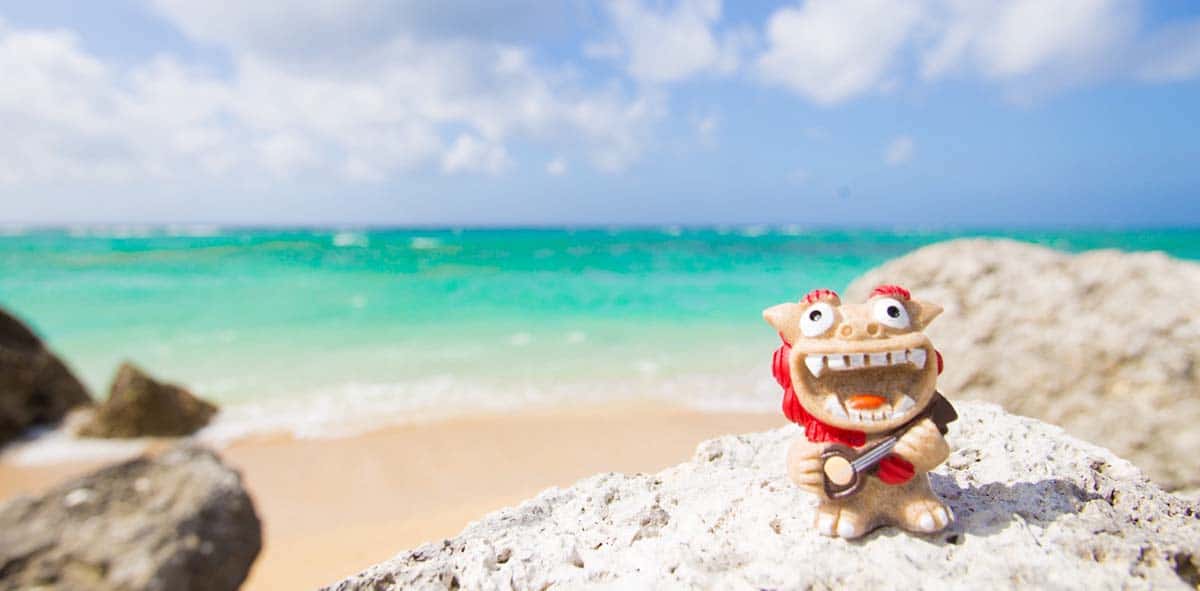
A complete trip to Japan it cannot be thought without knowing Okinawa. It is one of the prefectures that make up the country but it is about three-odd hours by plane from Tokyo, closer to Taiwan than to the main islands of Japan.
Okinawa is a tropical destination with turquoise seas and white sand beaches, but at the same time tragic stories from the Second World War and a great emigration after the conflict weigh on its shoulders. Today in Actualidad Viajes, what to see in Okinawa.
Okinawa
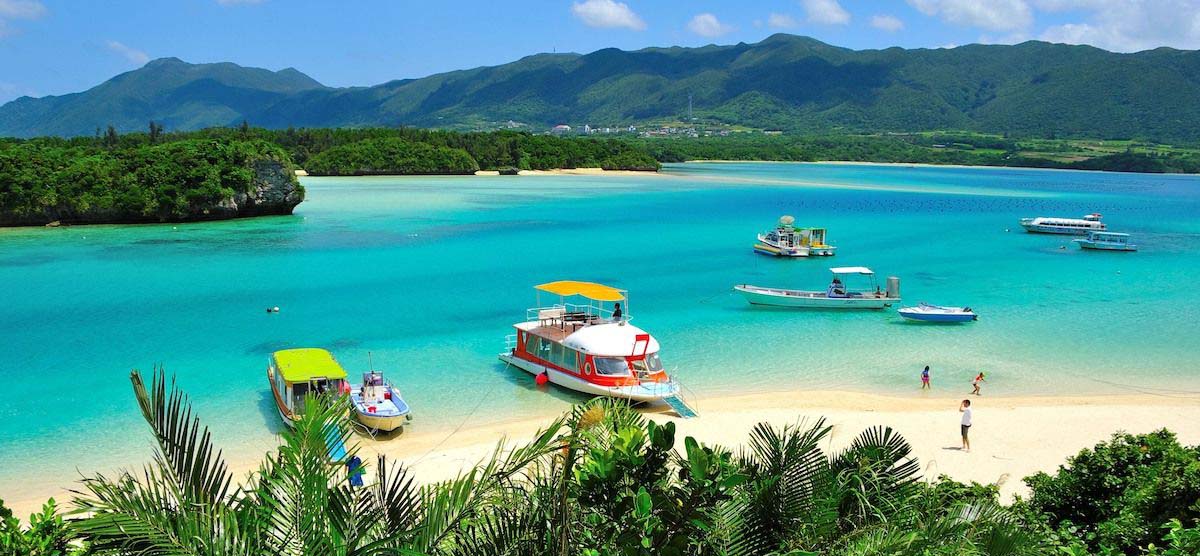
Ever It was the Kingdom of Kyukyu, an independent kingdom that at some point in the seventeenth century paid tribute to the Chinese emperor, but in 1609 the Japanese conquest began so the tribute passed from hands and it was in the time of the Meiji emperor, at the end of the XNUMXth century, that Japan annexed them to its dominions officially. Obviously China did not want to know anything but with the United States as a mediator, what do you think would happen? The kingdom was finished and Okinawa and the rest of the islands became Japanese.
After the war, which was terribly harsh for this island region, the America went on to manage everything and they were handed over to the Japanese government at different times. The total transfer would only occur in the '70sAlthough there are still American bases today that Okinawans continue to reject.
What to see in Okinawa
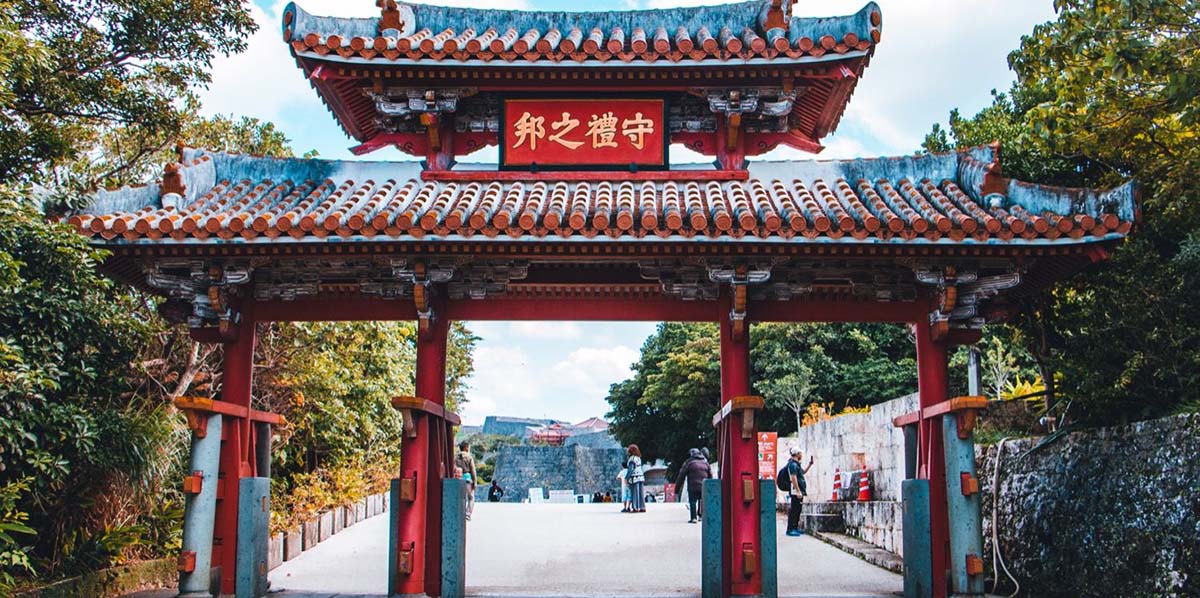
First you have to say that it is an archipelago and that there are several islands to visit, but that there is the okinawa island same, what it is the largest and most populated in the prefecture, in addition to being the center of transportation.
The capital of the prefecture is the city of Naha and it is where the American bases are located. The most urbanized part of the city is in the center of the island, but the southern end is still quite rugged and less populated, while the northern part preserves the forested hills and some fishing villages.
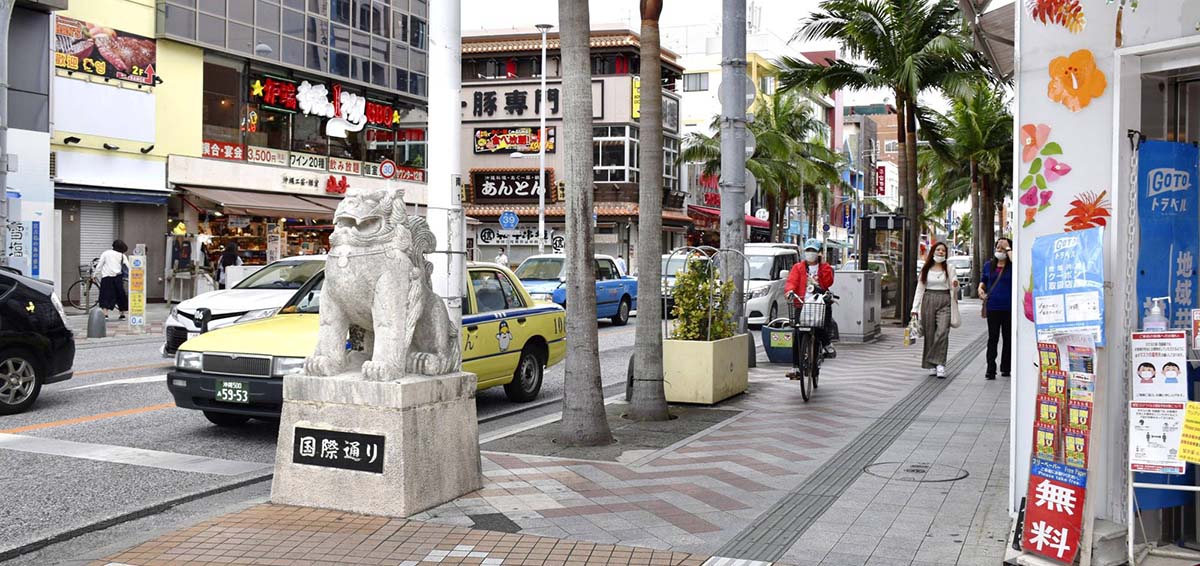
I was there in 2019, on my last trip to pre-pandemic Japan, and I must say that I did not like the city of Naha very much. Except for the main street, there is not much to see and if you move a little by bus, looking for nearby clowns, you see that the city is somewhat sad and is not in as good condition as the ones you see in central Japan.
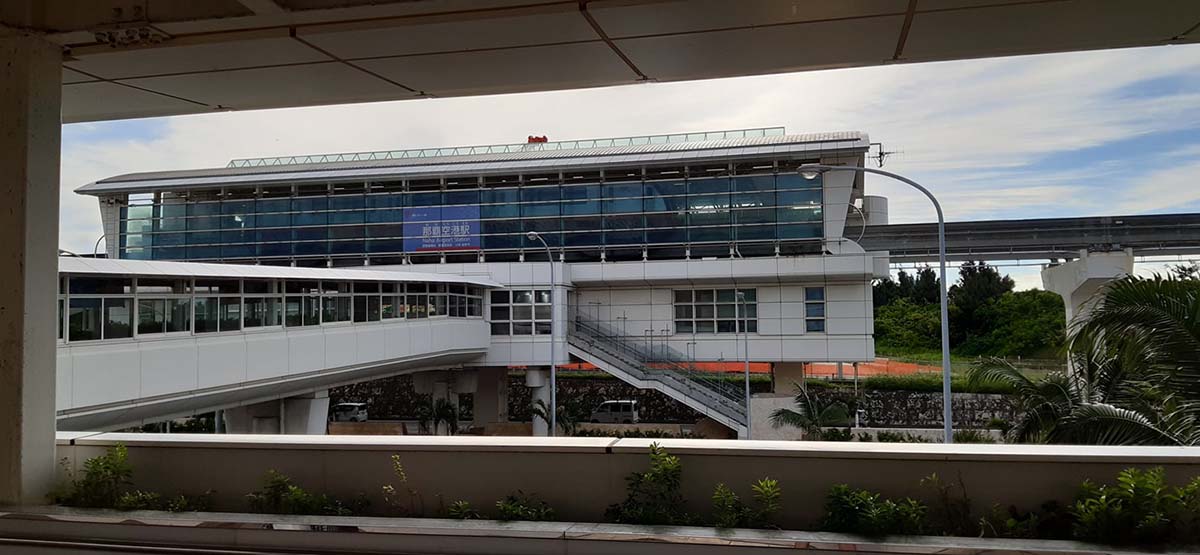
We arrived by plane from Haneda Airport and from the local airport we took the monorail that, although it does not make a great journey, brings you closer to the most important points of downtown Naha. Our hotel was about 400 meters from a station and although we thought that the shops were closed for the weekend, no, they remained that way every day we stayed so it seemed like a ghost sector more than a living city.
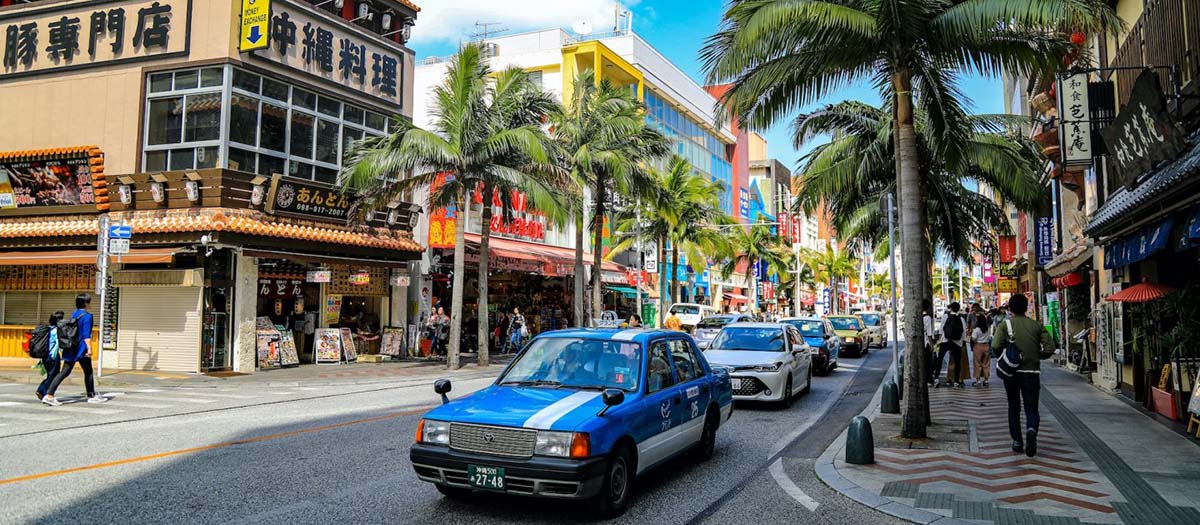
We looked for a hotel that was close to the main avenue, the Kokusaidori or Calle Internacional, as the translation would be. Has ashamed two kilometers long and crosses the center of Naha starting more or less at the central bus station and the town hall.
It has shops of all kinds, bars, hotels and restaurants on both sides, all in a beach town style. Some huge and spacious also open covered galleries full of shops that in turn open into several more branches, and in there you can lose a while looking for bargains or escaping from the sun: Mutsumidori and Hondori.
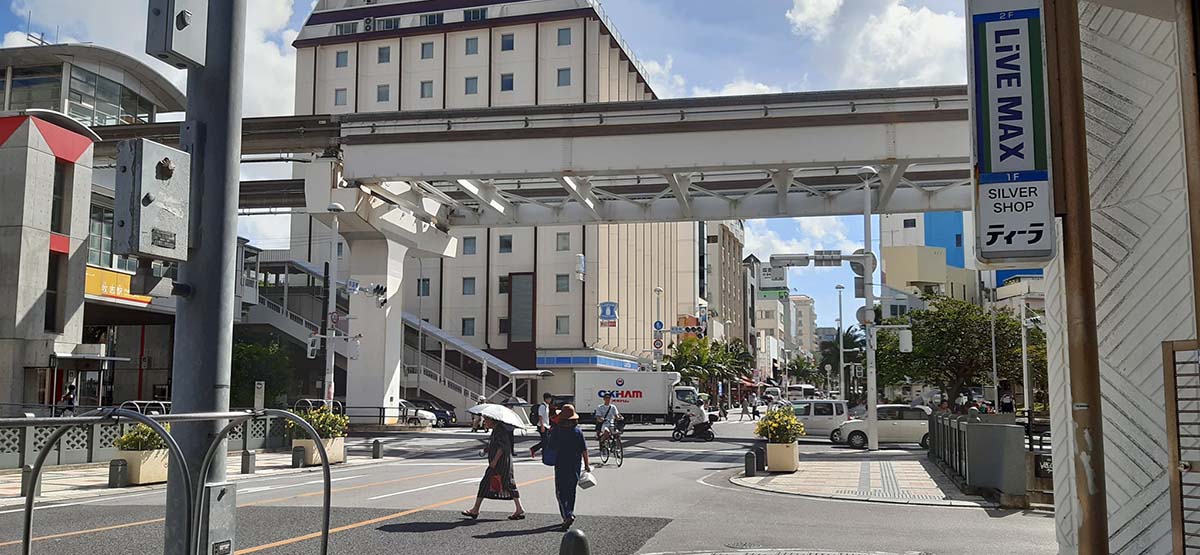
And it is that if you go to Naha in summer you will die of heat. We were literally thinking about the sea but it's terribly hot. We also went looking for night but there is really very little. We thought that because it was a tropical climate we were going to find shops and restaurants open until later but no, close everything early and at midnight you can go to sleep.
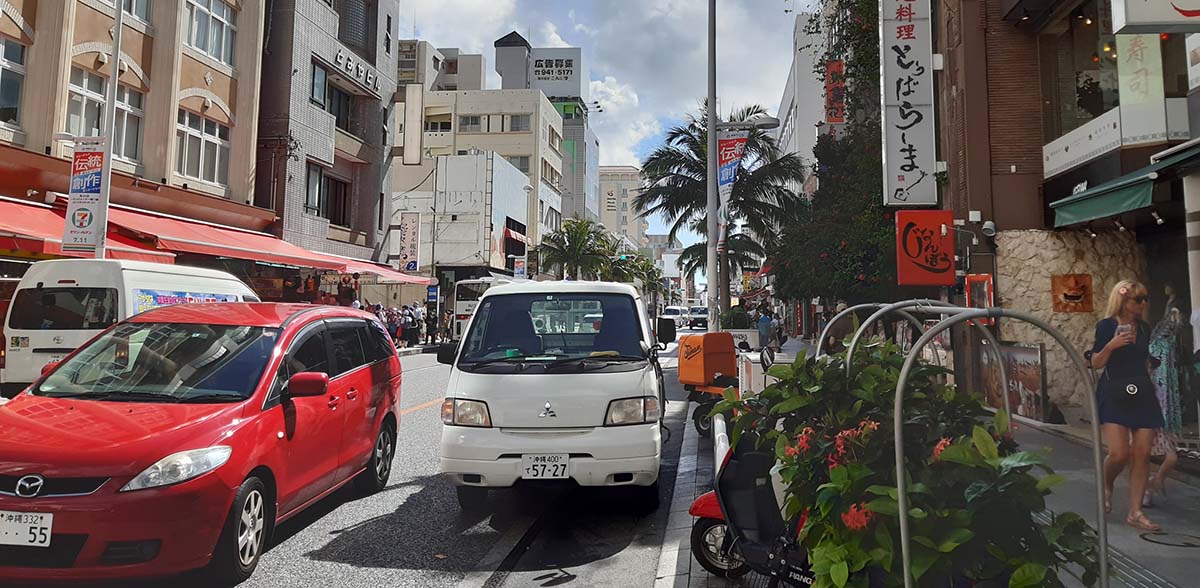
Actually the movement is concentrated in 200 or 300 meters, not much more, "life" begins to decline the more you walk and although there are new commercial buildings it seems that the stores are the same as in the '70s or' 80s. In the afternoons, when people return from excursions and the beach, there are more people and it is time to shop for gifts or have an ice cream. the most popular local brand is Blue seal and it is very tasty. You can also try the local meat, there are many barbecues that promote it.
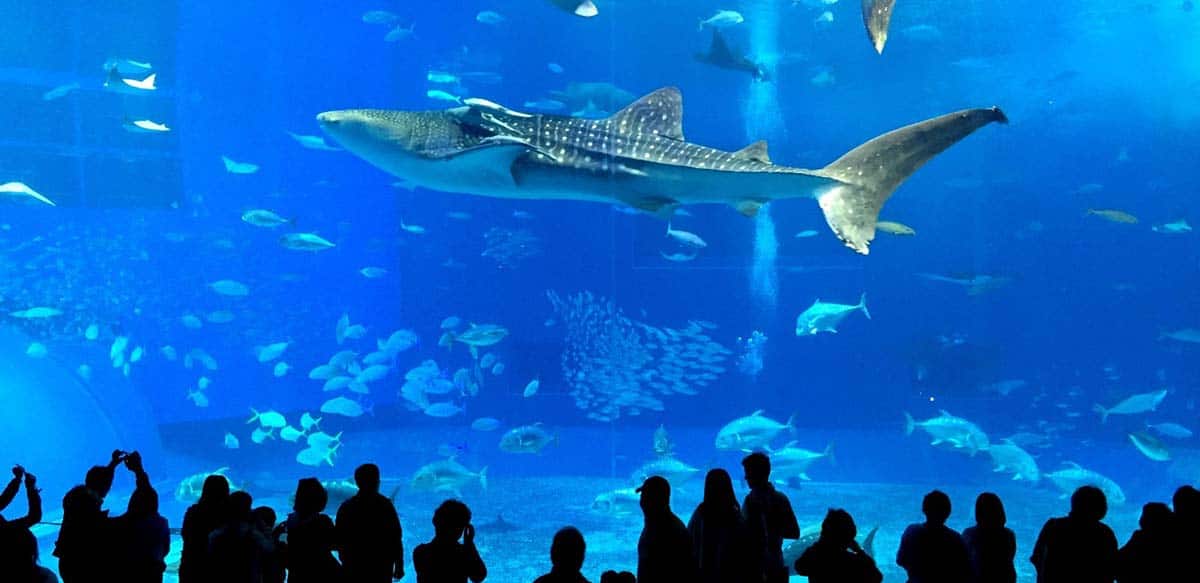
Undoubtedly the best that the main island offers in terms of tourism is the Churaumi Aquarium, is the best aquarium in the country and after being closed for many months due to the corona virus, it opened again last October. The place dates from the '70s, but in 2002 it was totally redesigned. What is the best? The huge Kuroshio tank, one of the largest in the world. It is named for the Kuroshio current which is responsible for the beautiful variety of marine flora and fauna on the islands.
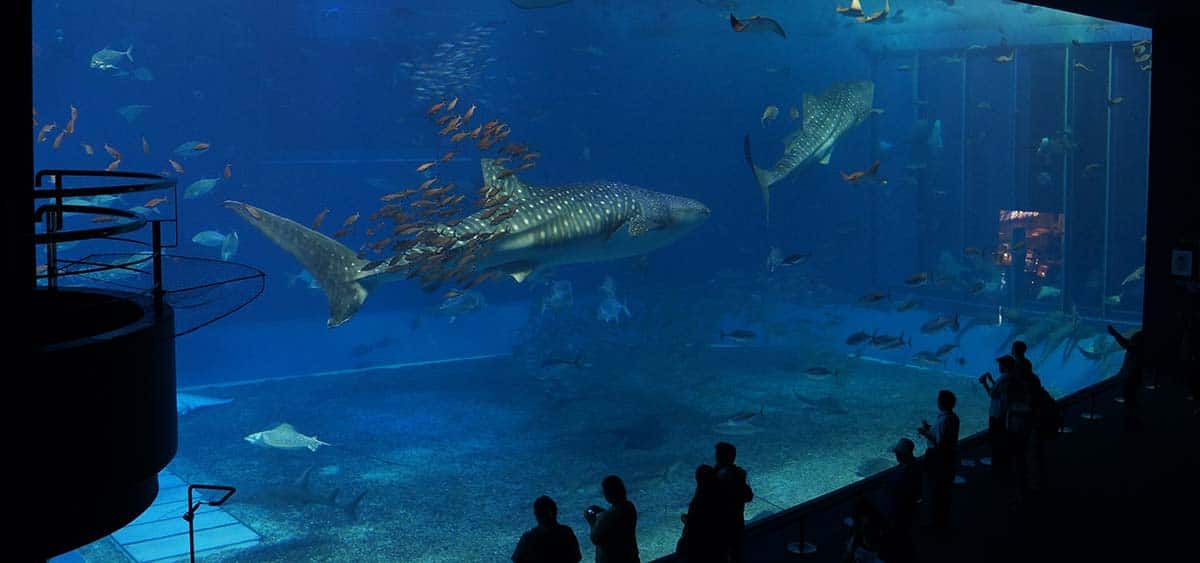
Inside the tank there is a lot of variety of species, including whale sharks and stingrays. Handsome! The aquarium has three floors, with the entrance on the third floor and the exit on the first. There is a pool where you can touch fish and see a beautiful display of live coral. The route that the place proposes takes you to the Kuroshio Tank and this is where you stay most of the visit because the views are great and with luck you can see how the fish are fed. There is also a theater-cinema with a projection on the marine life of the islands.
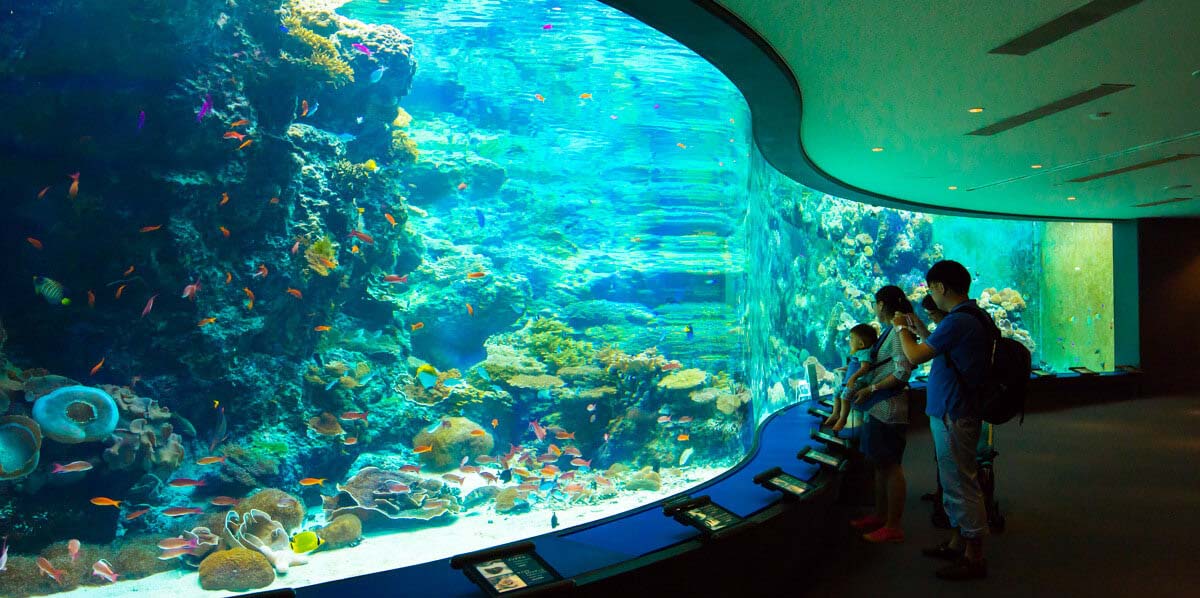
The truth is that the tank is the best thing in the aquarium, but if you like marine life, the rest will not disappoint you either. There is no lack of outdoor pools with dolphins, sea turtles, and manatees. How do you get here? It is best to rent a car and go on your own because It is 90 kilometers from downtown Naha, But you can go by buss, using the Okinawa Airport Shuttle or the Yanbaru Express or the 117 bus. Admission is 1880 yen.
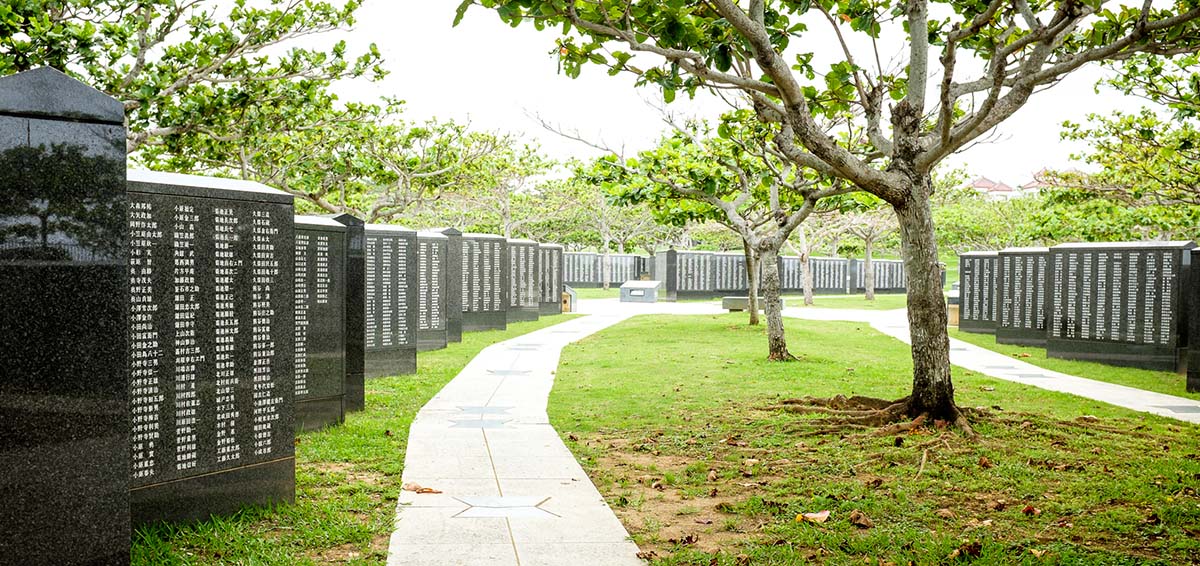
I really like history and one of the things that always attracted me to Japan is its invasive history and its participation in World War II, so my interests are there. So, I visited the War Memorial. Okianawa was the scene of the bloodiest battles of the so-called Pacific War and it is estimated that around 200 thousand people, half civilians, plus 12.500 Americans, died in the clashes that lasted from April to June of '45.
The memory of the war is heavy and is always present so there are museums, memorials and monuments everywhere. In fact, it took a long time for the emperor to be able to set foot on the island because people didn't even want to see him. The main memorial is the Peace Memorial Park which is on the southern tip of the island, with the museum providing insight into the war and the battle proper.
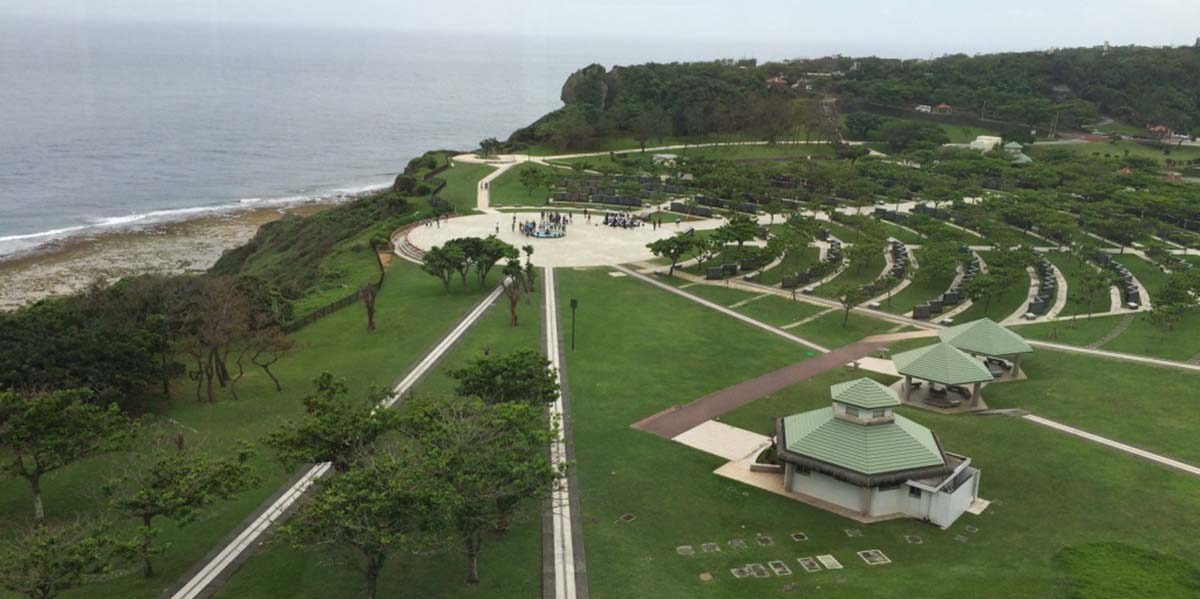
There is also a large collection of stone plaques bearing the names of fallen soldiers and civilians, including Taiwanese and Koreans who were forced laborers or slaves of the Japanese. A few kilometers away is the Himeyuri Monument reminiscent of female high school students who worked in the army, in hospitals dug out of the rock in the hills in dire conditions, and who, for the most part, died.
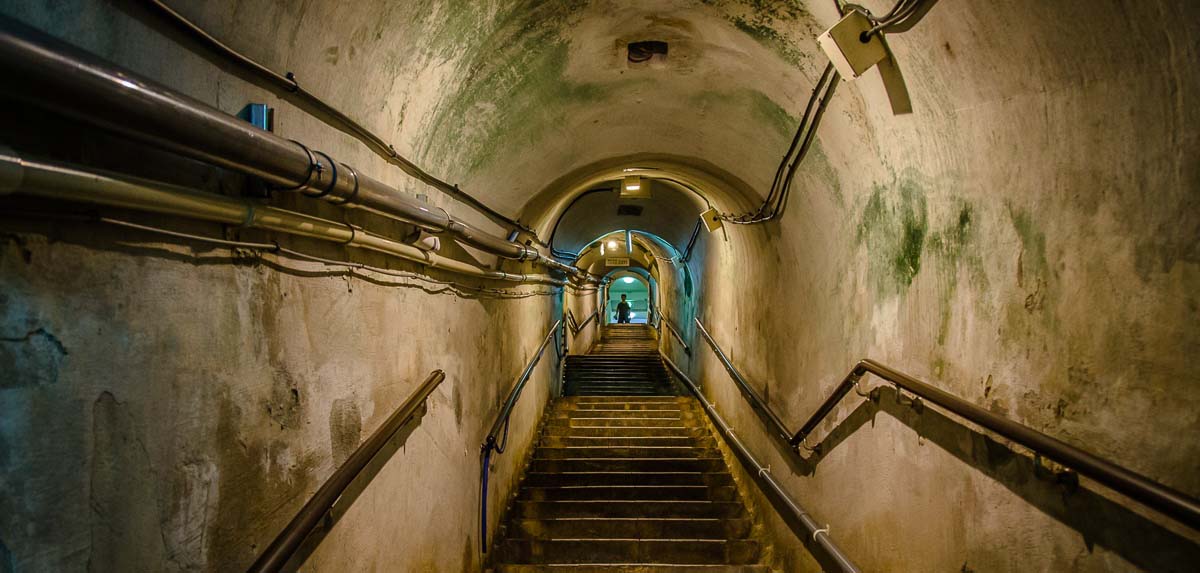
In this sense, I highly recommend visit the Underground Barracks of the Japanese Navy. You can get there by bus, taking it at the Naha Bus Terminal. This place is underground and consists of a network of tunnels of several meters, with passages, stairs and rooms of different sizes, which served as the headquarters of the Japanese navy during the war.
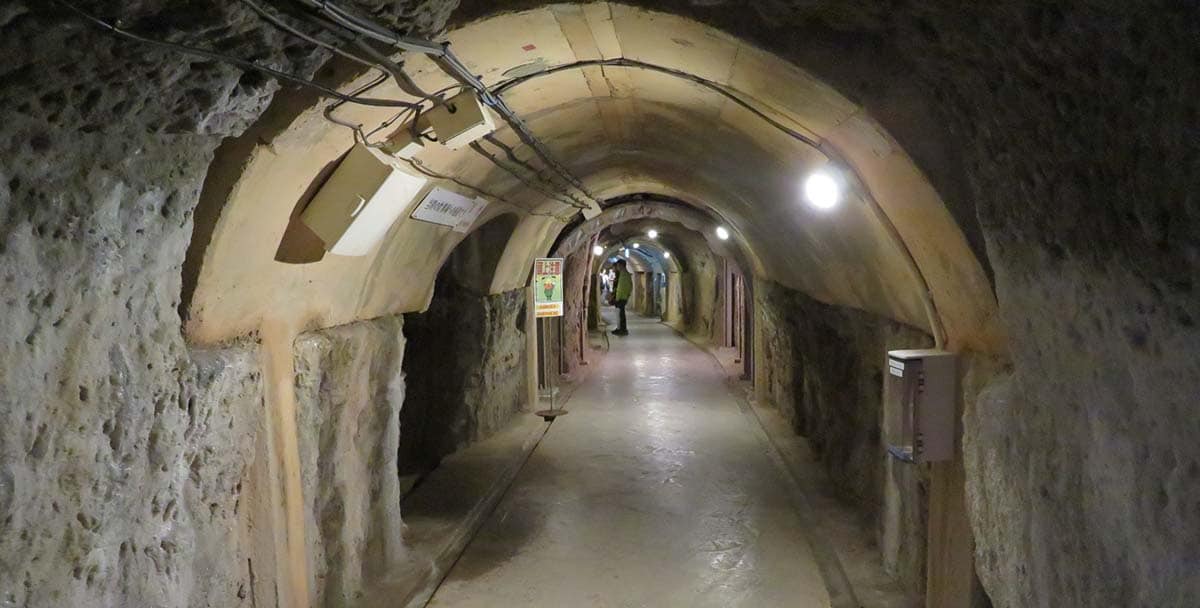
You will see the space where the power generator was, others where offices worked, stairs that connect corridors at different heights and a room whose walls retain the traces of the shrapnel with which some soldiers decided to kill themselves before the imminence of defeat. It is really mobilizing to walk around here. We were lucky and we were only four people that we crossed on the route. It wasn't hot at all, but we couldn't help but imagine how hundreds of soldiers had coexisted in those tight corridors.
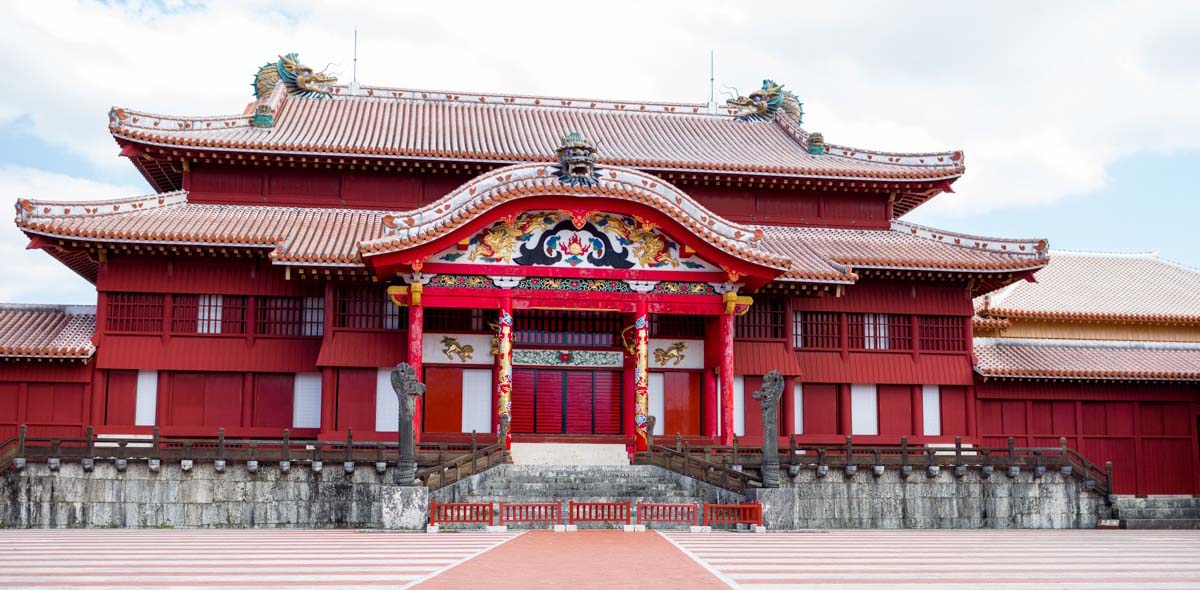
Admission is 600 yen and is open daily from 9 am to 5 pm. It's worth it. Another site that is classic in Okinawa is the Shuri Castle. Sadly it caught fire shortly after our visit in October 2019, but there are plans for the rebuilding to be completed in 2026. In the meantime you can go and see how the site is being worked on. Unfortunately that happens a lot with historical buildings in Japan, they are made of wood and stone, so it is very difficult to find an original and really old building.
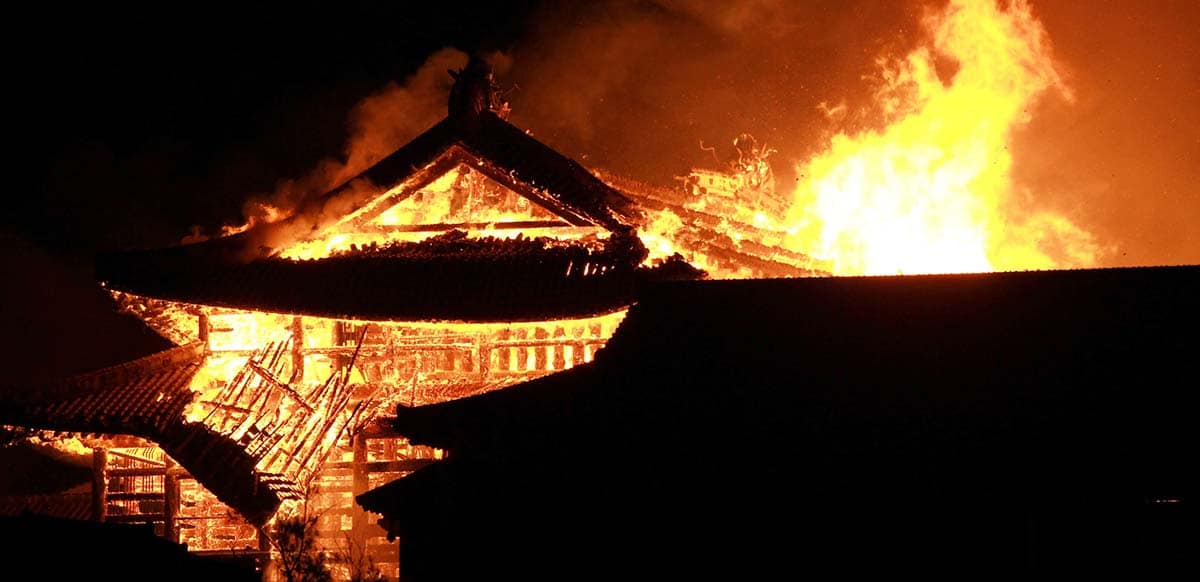
Shuri is the name of the original capital of the Kingdom of Ryuku and the castle is on the UNESCO list of World Heritage. Another ruined castle is the Nakagusuku Castle and there are also the Shikinaen Gardens, which were the royal gardens or Tamaudun, the royal mausoleum. To know the local culture you can visit Okinawa World or Ryukyu Mura. If you like art there is the Okinawa Prefectural Museum, if you like ceramics you can walk and shop around the Tsuboya district.
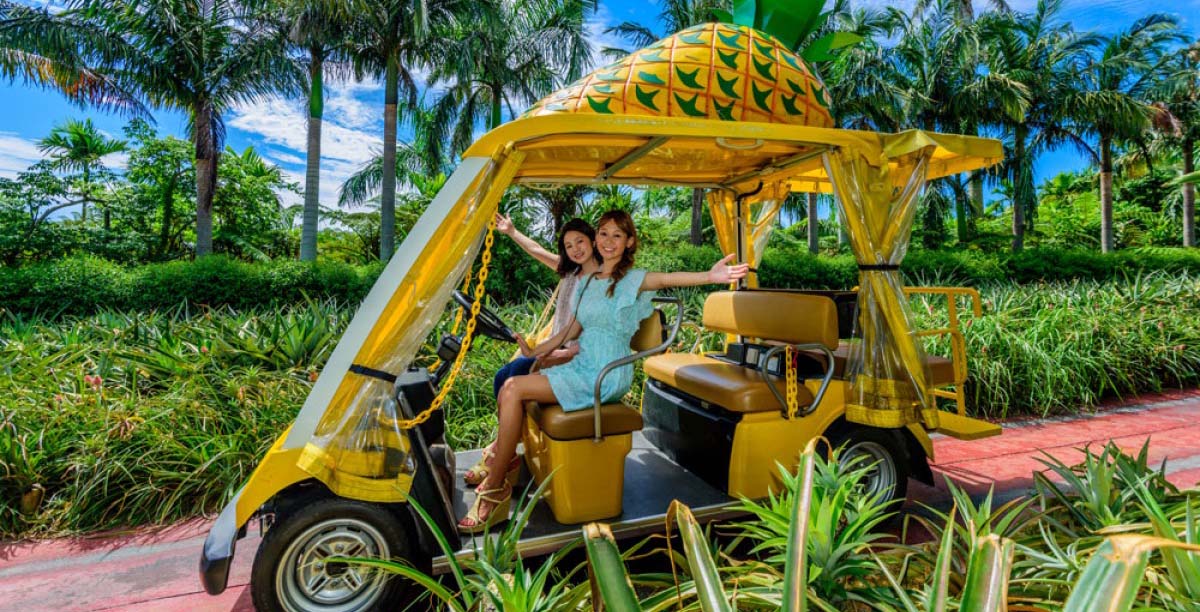
AmericanVillage It is a commercial center near the American bases, but if you are not in Okinawa to see better Americans, do not visit it. If you like pineapple, I'll tell you that Okianawa has plantations of this fruit and is a great producer. They are super sweet and juicy! The Nago Pineapple Park is the most. And as you know well, Japanese are big beer drinkersay the local brand is Orion. You can even visit the distillery on a very fun tour.
The truth is that the best thing you can do on the main island of Okinawa is to stay in Naha, give the city a couple of days and rent a car to tour the island, if you are not passing to some other more tropical island. . With the car you have freedom of movement and you can go to the little islands that are linked by bridges and that are very beautiful. In our case, we took a plane to Miyakoshima, a beautiful and tropical island where we spent five great days… very hot.